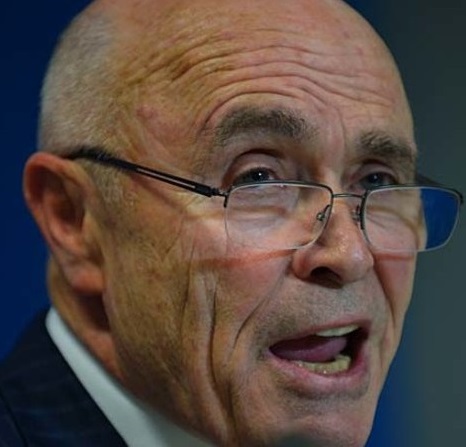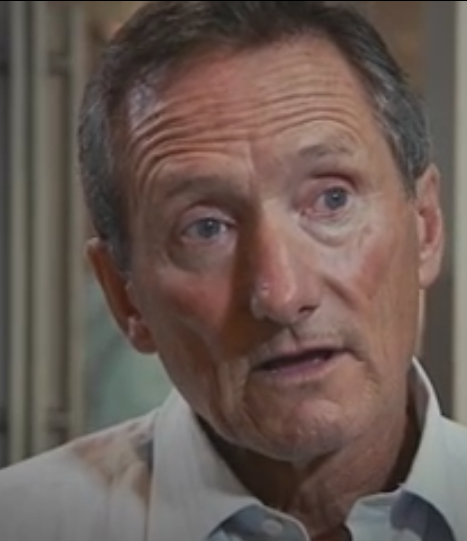If a belief is taken beyond the safety of rational thought, it’s then an act of faith. Brave and bold, but delusional. I’d argue that medicating is well down this path – devoutly taking risks with side-effects, perhaps even shortening lifespan, yet ‘smoke and mirrors’ is a fair description of the governance in clinical research. A blog on a fabricated conclusion in an NHMRC sponsored study is linked, and my notification of the misconduct to the publishing Arthritis Care & Research journal editor Dr Gary Firestein was never acknowledged. Likewise concerns about deception in drug trial PRO-HEART (linked) to the manager of research also went unanswered, and were subject to a Freedom of Information legal demand for disclosure. The Austin Hospital refused the FoI on the grounds of ‘trade secrets’, despite donated monies to peak bodies Beyond Blue and Heart Foundation sponsoring the scam.
A third matter is detailed below, and these were chosen from this site’s 43 posts to submit to Public Library of Science as a manuscript exemplifying medical research scams. Publication assistant Rebecca Green replied that “unfortunately such a paper would fall outside the scope of PLOS Medicine“. Dirty research can’t be retracted, furthermore making the case for a multitude of scandals won’t be published. Enough to shake one’s confidence in the system? Ditto the BMJ, even Accountability in Research journal were uninterested in research fraud criminality.
Impunity in both corrupting the medical evidence base and inappropriate commercial allegiance has led some to crossing of the boundary from immoral to illegal. ‘Dog and pony show’ is another idiom pertinent to NHMRC funded program BackTrack.  Managed by qualified dogcatcher Bernie Shakeshaft, their modus operandi is to attend a rural court where juvenile offenders have run out of warnings, and are due for detention. An alternative offer is made for these feral kids to voluntarily labour on a remote farm, where they’ll also be taught to handle dogs. This goes down well with the Magistrate “… if I can forward them to a structured program like BackTrack, I certainly feel like there would be less recidivism.” In 2013 while Bernie’s brother, University of NSW (UNSW) Prof Shakeshaft, was on the NHMRC council their grant application “This study quantifies the benefits/costs of combining cognitive-behaviour therapy with a community-reinforcement strategy to reduce substance-related harms among young Indigenous Australians” was approved for $386771. A year later Bernie took off on a study tour of the USA, Canada and Italy. Bernie’s been done for Driving Under the Influence, so has learnt by experience the perils of alcohol abuse. But he’s naïve about CBT, and the majority of incarcerated kids aren’t Indigenous. This is revealed in a book submitted by Helena Pastor for her PhD by observation from the local Uni. An excerpted page Wild_Boys_—-_(Pg_253) describes physical abuse and isolation from both social workers and community elders.
Managed by qualified dogcatcher Bernie Shakeshaft, their modus operandi is to attend a rural court where juvenile offenders have run out of warnings, and are due for detention. An alternative offer is made for these feral kids to voluntarily labour on a remote farm, where they’ll also be taught to handle dogs. This goes down well with the Magistrate “… if I can forward them to a structured program like BackTrack, I certainly feel like there would be less recidivism.” In 2013 while Bernie’s brother, University of NSW (UNSW) Prof Shakeshaft, was on the NHMRC council their grant application “This study quantifies the benefits/costs of combining cognitive-behaviour therapy with a community-reinforcement strategy to reduce substance-related harms among young Indigenous Australians” was approved for $386771. A year later Bernie took off on a study tour of the USA, Canada and Italy. Bernie’s been done for Driving Under the Influence, so has learnt by experience the perils of alcohol abuse. But he’s naïve about CBT, and the majority of incarcerated kids aren’t Indigenous. This is revealed in a book submitted by Helena Pastor for her PhD by observation from the local Uni. An excerpted page Wild_Boys_—-_(Pg_253) describes physical abuse and isolation from both social workers and community elders.
The majority of finance comes from the philanthropic Vincent Fairfax Foundation. So besides taking Aboriginal kids away from their community support, these souls are in Christian hands. This situation is ongoing, not some historical ‘taking the children away’. Barnaby Joyce redirected $200k from Indigenous Affairs to these criminals (harsh? The AFP described the affair as ‘fraud’, which I understand to be a crime).
A report was produced, ‘The Feasibility of Embedding Data Collection into the Routine Service Delivery of a Multi-Component Program for High-Risk Young People’ *, which described their use of a routine survey. This sufficed for NHMRC, whose Ethics & Governance dept disclaimed accountability for their spend of our funds “…allegations of misconduct would need to be addressed by raising your concerns with the research institution through which the research was conducted.” Director of Integrity at UNSW, Bronwyn Greene, has been working on her answer to this since May 5th. So too has bureaucrat David Baragry, whose previous diplomatic statement was careful not to tread on toes in Canberra: “The Ombudsman has the discretion not to investigate certain complaints… respects the role, expertise and decisions of the NHMRC and … tends to consider only questions related to the NHMRC’s administrative processes.” Then Minister for Science & Research, SEN Kim Carr, recognizing the need for an Office of Research Integrity left the task to the key funding bodies NHMRC and Aust Research Council to establish an independent review body. They did so, but within their own organisations. This Committee, ARIC hasn’t replied either. In its first year 2011 it accepted only one complaint against its NHMRC parent, then rejected all allegations but for a procedural matter regarding sending of a letter. It’s not listed under https://www.nhmrc.gov.au/about/nhmrc-committees but buried as a paragraph in the NHMRC Annual Report – the latest stating on pg98 that one matter was dismissed, and another is an ongoing investigation. That’s about all they have to show in five years (check the reports for yourselves: search for nh15, nh162, nh166, nh169 & nh172). The cries of dissent are more voluble – links available from http://www.bmartin.cc/pubs/plagiarismfraud.html are a start.
19th Oct update: After the UNSW and ARIC four missed dates that they’d offered as targets for a response, it’s obvious that this will be stonewalled rather than whitewashed. Pity, since we miss out on the comedic material unearthed by America’s ORI being taken to court by a fraudster… “Dr. Sauer admitted that the images in his publications and grant applications were knowingly and intentionally falsified, but denied culpability, claiming that a member of an anti-gene technology activist group had falsified Dr. Sauer’s data in order to subvert gene-technology research. As evidence for his claim, Dr. Sauer submitted an uncorroborated declaration purportedly by an individual named “Rune Dreser,” who allegedly stated that he had hacked into Dr. Sauer’s computers and altered Dr. Sauer’s research results. The declaration, written in German and purportedly notarized by a notary in Germany, did not contain the notary’s name, and the signature of the notary was illegible. Noticing this irregularity, the HHS attorney for ORI emailed the notarial office in Germany to inquire about the authenticity of the notarization. The director of the notarial office responded that the notary seal and signature were most likely forgeries. ”
1st April: comedy gold from UNSW – when offered right-of-reply to a manuscript documenting their history of research misconduct eg harbouring of Khachigian, they came back with a ‘Strictly Confidential’ status report (which said that nothing had been done yet, after 9 months).
* Int. J. Environ. Res. Public Health 2017, 14, 208; doi:10.3390/ijerph14020208





 Managed by qualified dogcatcher Bernie Shakeshaft, their modus operandi is to attend a rural court where juvenile offenders have run out of warnings, and are due for detention. An alternative offer is made for these feral kids to voluntarily labour on a remote farm, where they’ll also be taught to handle dogs. This goes down well with the Magistrate “… if I can forward them to a structured program like BackTrack, I certainly feel like there would be less recidivism.” In 2013 while Bernie’s brother, University of NSW (UNSW) Prof Shakeshaft, was on the NHMRC council their grant application “This study quantifies the benefits/costs of combining cognitive-behaviour therapy with a community-reinforcement strategy to reduce substance-related harms among young Indigenous Australians” was approved for $386771. A year later Bernie took off on a study tour of the USA, Canada and Italy. Bernie’s been done for Driving Under the Influence, so has learnt by experience the perils of alcohol abuse. But he’s naïve about CBT, and the majority of incarcerated kids aren’t Indigenous. This is revealed in a book submitted by Helena Pastor for her PhD by observation from the local Uni. An excerpted page
Managed by qualified dogcatcher Bernie Shakeshaft, their modus operandi is to attend a rural court where juvenile offenders have run out of warnings, and are due for detention. An alternative offer is made for these feral kids to voluntarily labour on a remote farm, where they’ll also be taught to handle dogs. This goes down well with the Magistrate “… if I can forward them to a structured program like BackTrack, I certainly feel like there would be less recidivism.” In 2013 while Bernie’s brother, University of NSW (UNSW) Prof Shakeshaft, was on the NHMRC council their grant application “This study quantifies the benefits/costs of combining cognitive-behaviour therapy with a community-reinforcement strategy to reduce substance-related harms among young Indigenous Australians” was approved for $386771. A year later Bernie took off on a study tour of the USA, Canada and Italy. Bernie’s been done for Driving Under the Influence, so has learnt by experience the perils of alcohol abuse. But he’s naïve about CBT, and the majority of incarcerated kids aren’t Indigenous. This is revealed in a book submitted by Helena Pastor for her PhD by observation from the local Uni. An excerpted page 







